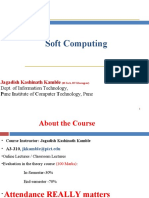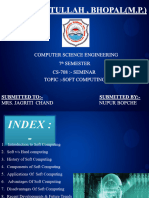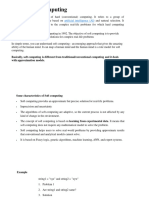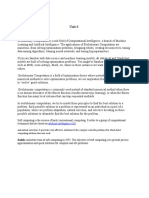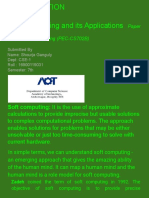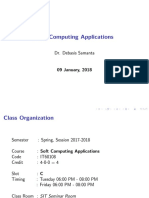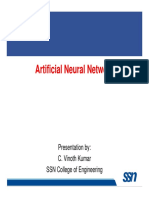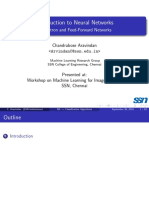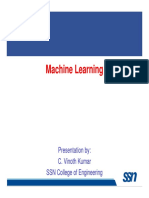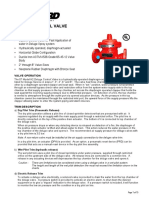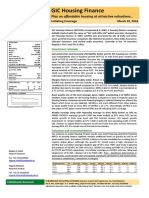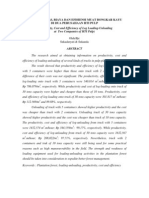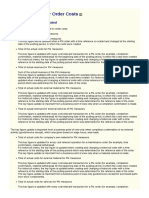0% found this document useful (0 votes)
280 views21 pagesIntroduction To Soft Computing: Presentation By: C. Vinoth Kumar SSN College of Engineering
This document provides an introduction to soft computing. It defines soft computing as a new multidisciplinary field that aims to construct new generation artificial intelligence using techniques like fuzzy logic, neural networks, evolutionary computing, and probabilistic computing. These soft computing techniques are tolerant of imprecision and able to solve complex real-world problems with low solution costs. The document outlines some key components and applications of soft computing, including neural networks, fuzzy logic, genetic algorithms, and more.
Uploaded by
LekshmiCopyright
© © All Rights Reserved
We take content rights seriously. If you suspect this is your content, claim it here.
Available Formats
Download as PDF, TXT or read online on Scribd
0% found this document useful (0 votes)
280 views21 pagesIntroduction To Soft Computing: Presentation By: C. Vinoth Kumar SSN College of Engineering
This document provides an introduction to soft computing. It defines soft computing as a new multidisciplinary field that aims to construct new generation artificial intelligence using techniques like fuzzy logic, neural networks, evolutionary computing, and probabilistic computing. These soft computing techniques are tolerant of imprecision and able to solve complex real-world problems with low solution costs. The document outlines some key components and applications of soft computing, including neural networks, fuzzy logic, genetic algorithms, and more.
Uploaded by
LekshmiCopyright
© © All Rights Reserved
We take content rights seriously. If you suspect this is your content, claim it here.
Available Formats
Download as PDF, TXT or read online on Scribd
/ 21





